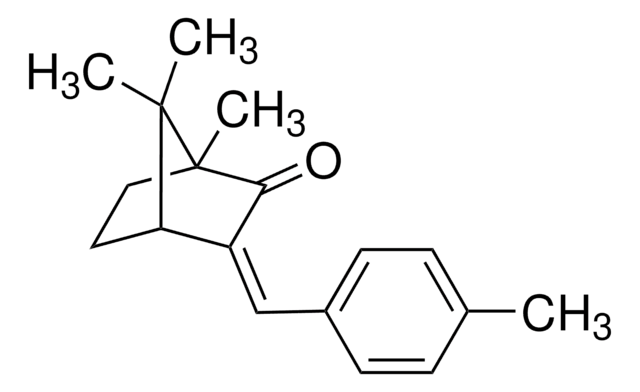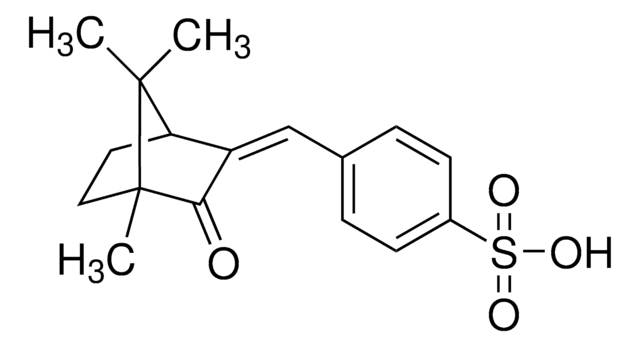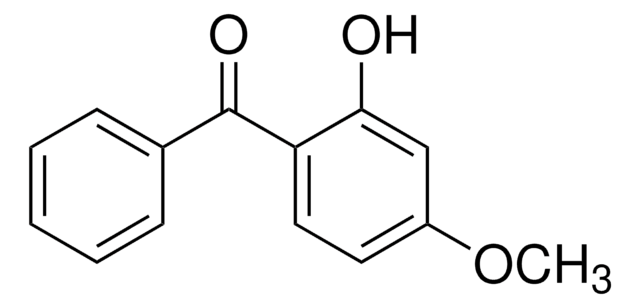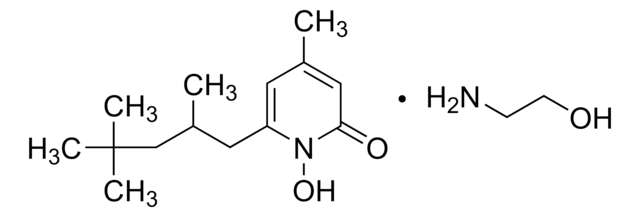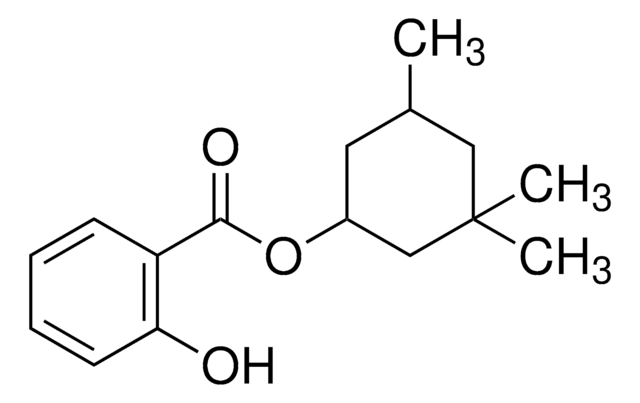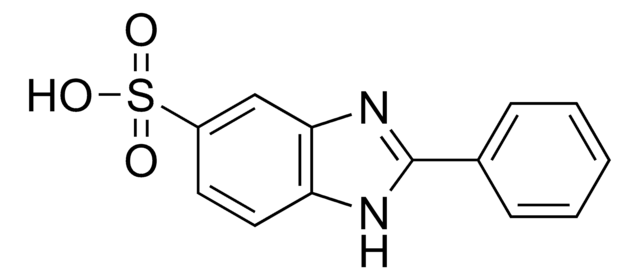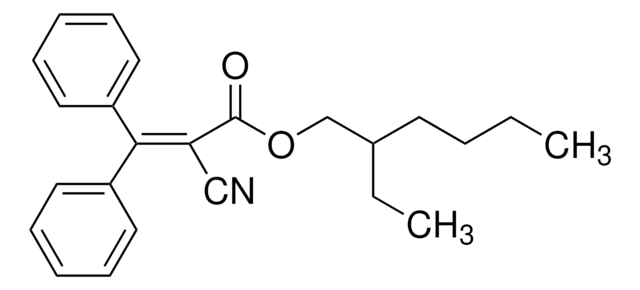Kluczowe dokumenty
78551
3-(4-Methylbenzylidene)camphor
≥98.0% (GC)
Synonim(y):
1,7,7-Trimethyl-3-(4-methylbenzylidene)-norbornan-2-one, 1,7,7-Trimethyl-3-[(4-methylphenyl)methylene]-bicyclo[2.2.1]heptan-2-one, 4-MBC, 4-Methylbenzylidene camphor
About This Item
Polecane produkty
Próba
≥98.0% (GC)
Formularz
crystals
ciąg SMILES
Cc1ccc(cc1)\C=C2\[C@@H]3CC[C@](C)(C2=O)C3(C)C
InChI
1S/C18H22O/c1-12-5-7-13(8-6-12)11-14-15-9-10-18(4,16(14)19)17(15,2)3/h5-8,11,15H,9-10H2,1-4H3/b14-11-/t15-,18+/m0/s1
Klucz InChI
HEOCBCNFKCOKBX-IRELMECMSA-N
Szukasz podobnych produktów? Odwiedź Przewodnik dotyczący porównywania produktów
Opis ogólny
Hasło ostrzegawcze
Warning
Zwroty wskazujące rodzaj zagrożenia
Zwroty wskazujące środki ostrożności
Klasyfikacja zagrożeń
Aquatic Acute 1 - Aquatic Chronic 1
Kod klasy składowania
11 - Combustible Solids
Klasa zagrożenia wodnego (WGK)
WGK 3
Temperatura zapłonu (°F)
372.2 °F
Temperatura zapłonu (°C)
189 °C
Środki ochrony indywidualnej
Eyeshields, Gloves, type P3 (EN 143) respirator cartridges
Wykazy regulacyjne
Wykazy regulacyjne dotyczą głównie produktów chemicznych. Można w nich podawać ograniczoną liczbę informacji na temat produktów niechemicznych. Brak wpisu oznacza, że żaden ze składników nie znajduje się w wykazie. Użytkownik odpowiada za zagwarantowanie bezpiecznego i zgodnego z prawem stosowania produktu.
EU REACH SVHC Candidate List
Wybierz jedną z najnowszych wersji:
Masz już ten produkt?
Dokumenty związane z niedawno zakupionymi produktami zostały zamieszczone w Bibliotece dokumentów.
Klienci oglądali również te produkty
Nasz zespół naukowców ma doświadczenie we wszystkich obszarach badań, w tym w naukach przyrodniczych, materiałoznawstwie, syntezie chemicznej, chromatografii, analityce i wielu innych dziedzinach.
Skontaktuj się z zespołem ds. pomocy technicznej